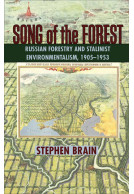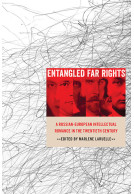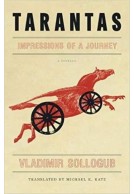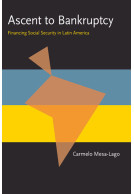Rise and Fall of Belarusian Nationalism, 1906–1931, The (Paperback)
Imprint: University of Pittsburgh Press
Series: Russian and East European Studies
Pages: 448
ISBN: 9780822963080
Published: 22nd December 2014
Script Academic & Professional
Series: Russian and East European Studies
Pages: 448
ISBN: 9780822963080
Published: 22nd December 2014
Script Academic & Professional
This book will be reprinted and your order will be released in due course.
You'll be £49.00 closer to your next £10.00 credit when you purchase Rise and Fall of Belarusian Nationalism, 1906–1931, The. What's this?
+£4.99 UK Delivery or free UK delivery if order is over £40
(click here for international delivery rates)
Order within the next 8 hours, 29 minutes to get your order processed the next working day!
Need a currency converter? Check XE.com for live rates
(click here for international delivery rates)
Order within the next 8 hours, 29 minutes to get your order processed the next working day!
Need a currency converter? Check XE.com for live rates
Modern Belarusian nationalism emerged in the early twentieth century during a dramatic period that included a mass exodus, multiple occupations, seven years of warfare, and the partition of the Belarusian lands. In this original history, Per Anders Rudling traces the evolution of modern Belarusian nationalism from its origins in late imperial Russia to the early 1930s.The revolution of 1905 opened a window of opportunity, and debates swirled around definitions of ethnic, racial, or cultural belonging. By March of 1918, a small group of nationalists had declared the formation of a Belarusian People’s Republic (BNR), with territories based on ethnographic claims. Less than a year later, the Soviets claimed roughly the same area for a Belarusian Soviet Socialist Republic (BSSR). Belarusian statehood was declared no less than six times between 1918 and 1920. In 1921, the treaty of Riga officially divided the Belarusian lands between Poland and the Soviet Union. Polish authorities subjected Western Belarus to policies of assimilation, alienating much of the population. At the same time, the Soviet establishment of Belarusian-language cultural and educational institutions in Eastern Belarus stimulated national activism in Western Belarus. Sporadic partisan warfare against Polish authorities occurred until the mid-1920s, with Lithuanian and Soviet support. On both sides of the border, Belarusian activists engaged in a process of mythmaking and national mobilization. By 1926, Belarusian political activism had peaked, but then waned when coups d’états brought authoritarian rule to Poland and Lithuania. The year 1927 saw a crackdown on the Western Belarusian national movement, and in Eastern Belarus, Stalin’s consolidation of power led to a brutal transformation of society and the uprooting of Belarusian national communists.As a small group of elites, Belarusian nationalists had been dependent on German, Lithuanian, Polish, and Soviet sponsors since 1915. The geopolitical rivalry provided opportunities, but also liabilities. After 1926, maneuvering this complex and progressively hostile landscape became difficult. Support from Kaunas and Moscow for the Western Belarusian nationalists attracted the interest of the Polish authorities, and the increasingly autonomous republican institutions in Minsk became a concern for the central government in the Kremlin.As Rudling shows, Belarus was a historic battleground that served as a political tool, borderland, and buffer zone between greater powers. Nationalism arrived late, was limited to a relatively small elite, and was suppressed in its early stages. The tumultuous process, however, established the idea of Belarusian statehood, left behind a modern foundation myth, and bequeathed the institutional framework of a proto-state, all of which resurfaced as building blocks for national consolidation when Belarus gained independence in 1991.
Other titles in the series...
Other titles in University of Pittsburgh Press...





















